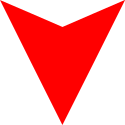Grand Prix Belgii 1950
| 5. wyścig z 7 w sezonie 5. Grand Prix Formuły 1 | ||||
 | ||||
| Data | 18 czerwca 1950 | |||
|---|---|---|---|---|
| Trasa | ||||
| Liczba okrążeń | 35 | |||
| Długość okrążenia | 14,120 km | |||
| Dystans | 494,200 km | |||
| Uczestnicy | ||||
| Zgłoszenia | 14 kierowców | |||
| Zakwalifikowało się | 14 kierowców | |||
| Sklasyfikowano | 10 kierowców | |||
| Ukończyło wyścig | 10 kierowców | |||
| Wyniki | ||||
| Pole position | Giuseppe Farina | |||
| Zwycięzca | Juan Manuel Fangio | |||
| Najszybsze okrążenie | Giuseppe Farina | |||
| 5. Grand Prix w sezonie 1950 | ||||
| Poprzednie | ||||
| Następne | ||||
| 12. Grand Prix Belgii | ||||
| ||||
Grand Prix Belgii 1950, oficjalnie XII Grote Prijs Van Belgie – piąta runda Mistrzostw Świata Formuły 1 w sezonie 1950.
Lista startowa
Wyniki
Kwalifikacje
| P | Nr | Kierowca | Konstruktor | Czas | Poz. s. |
|---|---|---|---|---|---|
| 1 | 8 | Alfa Romeo | 4:37 | 1 | |
| 2 | 10 | Alfa Romeo | 4:37 | 2 | |
| 3 | 12 | Alfa Romeo | 4:41 | 3 | |
| 4 | 2 | Ferrari | 4:47 | 4 | |
| 5 | 6 | Talbot-Lago-Talbot | 4:47 | 5 | |
| 6 | 4 | Ferrari | 4:49 | 6 | |
| 7 | 16 | Talbot-Lago-Talbot | 4:52 | 7 | |
| 8 | 14 | Talbot-Lago-Talbot | 4:53 | 8 | |
| 9 | 18 | Talbot-Lago-Talbot | 4:56 | 9 | |
| 10 | 22 | Talbot-Lago-Talbot | 5:01 | 10 | |
| 11 | 20 | Talbot-Lago-Talbot | 5:13 | 11 | |
| 12 | 26 | Alta | 5:44 | 12 | |
| 13 | 30 | Maserati | 5:45 | 13 | |
| 14 | 24 | Talbot-Lago-Talbot | — | 14 | |
| Źródło: Stats F1[2][3] | |||||
Wyścig
| P | Nr | Kierowca | Konstruktor | Okr. | Czas | Start | +/– | Punkty |
|---|---|---|---|---|---|---|---|---|
| 1 | 10 | Alfa Romeo | 35 | 2:47:26 | 2 | 8 | ||
| 2 | 12 | Alfa Romeo | 35 | +0:14 | 3 | 6 | ||
| 3 | 14 | Talbot-Lago-Talbot | 35 | +2:19 | 8 | 4 | ||
| 4 | 8 | Alfa Romeo | 35 | +4:05 | 1 | 3+1[a] | ||
| 5 | 4 | Ferrari | 34 | +1 okrążenie | 6 | 2 | ||
| 6 | 2 | Ferrari | 33 | +2 okrążenia | 4 | |||
| 7 | 22 | Talbot-Lago-Talbot | 33 | +2 okrążenia | 10 | |||
| 8 | 24 | Talbot-Lago-Talbot | 32 | +3 okrążenia | 14 | |||
| 9 | 26 | Alta | 30 | +5 okrążeń | 12 | |||
| 10 | 30 | Maserati | 29 | +6 okrążeń | 13 | |||
| NS | 20 | Talbot-Lago-Talbot | 22 | NU (silnik) | 11 | |||
| NS | 6 | Talbot-Lago-Talbot | 20 | NU (silnik) | 5 | |||
| NS | 16 | Talbot-Lago-Talbot | 15 | NU (przegrzanie) | 7 | |||
| NS | 18 | Talbot-Lago-Talbot | 2 | NU (silnik) | 9 | |||
| Źródło: Stats F1[4] | ||||||||
- Uwagi
- ↑ Dodatkowy 1 punkt jest przyznawany kierowcy, który ustanowił najszybsze okrążenie w wyścigu.
Najszybsze okrążenie
| Nr | Kierowca | Konstruktor | Czas | Okr. |
|---|---|---|---|---|
| 8 | Alfa Romeo | 4:34 | 18 | |
| Źródło: Stats F1[5] | ||||
Prowadzenie w wyścigu
| Nr | Kierowca | Konstruktor | Okrążenia | Suma | ||
|---|---|---|---|---|---|---|
| 10 | Alfa Romeo | 1–6, 20–35 | 22 | |||
| 8 | Alfa Romeo | 7–11, 18–19 | 7 | |||
| 6 | Talbot-Lago-Talbot | 13–17 | 5 | |||
| 12 | Alfa Romeo | 12 | 1 | |||
| Źródło: Stats F1[6] | ||||||
Klasyfikacja po wyścigu
Pierwsza piątka otrzymywała punkty według klucza 8-6-4-3-2, 1 punkt przyznawany był dla kierowcy, który wykonał najszybsze okrążenie w wyścigu[7]. Klasyfikacja konstruktorów została wprowadzona w 1958 roku[8].
Źródło: [9]
Uwzględniono tylko kierowców, którzy zdobyli jakiekolwiek punkty
| P | +/- | Kierowca | Starty | Punkty | P1 | P2 | P3 | PP | NO | NS |
|---|---|---|---|---|---|---|---|---|---|---|
| 1 | 0 | 4 | 22 | 2 | – | – | 2 | 3 | 1 | |
| 2 | 0 | 4 | 18 | – | 3 | – | – | – | 1 | |
| 3 | 0 | 4 | 17 | 2 | – | – | 2 | 1 | 2 | |
| 4 | +1 | 4 | 10 | – | – | 2 | – | – | 1 | |
| 5 | -2 | 1 | 9 | 1 | – | – | – | 1 | – | |
| 6 | -1 | 3 | 8 | – | 1 | – | – | – | 1 | |
| 7 | -2 | 1 | 6 | – | 1 | – | – | – | – | |
| 8 | 0 | 3 | 5 | – | – | – | – | – | 1 | |
| 9 | 0 | 3 | 4 | – | – | 1 | – | – | 1 | |
| = | 0 | 1 | 4 | – | – | 1 | – | – | – | |
| = | 0 | 1 | 4 | – | – | 1 | – | – | – | |
| 12 | 0 | 3 | 3 | – | – | – | – | – | 2 | |
| = | 0 | 3 | 3 | – | – | – | – | – | 2 | |
| = | 0 | 1 | 3 | – | – | – | – | – | – | |
| 15 | 0 | 1 | 2 | – | – | – | – | – | – | |
| 16 | 0 | 1 | 1 | – | – | – | – | – | – | |
| = | 0 | 1 | 1 | – | – | – | – | – | – | |
| P | +/- | Kierowca | Starty | Punkty | P1 | P2 | P3 | PP | NO | NS |
Przypisy
- ↑ Belgium 1950 – Race entrants, Stats F1 [dostęp 2021-05-23] (ang.).
- ↑ Belgium 1950 – Qualifications, Stats F1 [dostęp 2021-05-23] (ang.).
- ↑ Belgium 1950 – Starting grid, Stats F1 [dostęp 2021-05-23] (ang.).
- ↑ Belgium 1950 – Result, Stats F1 [dostęp 2021-05-23] (ang.).
- ↑ Belgium 1950 – Best laps, Stats F1 [dostęp 2021-05-23] (ang.).
- ↑ Belgium 1950 – Laps led, Stats F1 [dostęp 2021-05-23] (ang.).
- ↑ Sezon 1950 > Klasyfikacje generalne (pol.). Zarchiwizowana strona Wyprzedź Mnie!. [dostęp 2022-04-29].
- ↑ 1950 > Konstruktorzy > Podsumowanie rezultatów (pol.). Zarchiwizowana strona Wyprzedź Mnie!. [dostęp 2022-04-29].
- ↑ BELGIUM 1950 - Championship (ang.). STATS F1. [dostęp 2022-04-29].
Linki zewnętrzne
- Strona Grand Prix Belgii 1950 na oficjalnej stronie Formuły 1 (ang.). formula1.com. [dostęp 2021-10-06].
Media użyte na tej stronie
Flag of Italy from 1946 to 2003, when exact colors were specified.
Green arrow icon pointing up
US Flag with 48 stars. In use for 47 years from July 4, 1912, to July 3, 1959.
The national flag of Kingdom of Thailand since September 2017; there are total of 3 colours:
- Red represents the blood spilt to protect Thailand’s independence and often more simply described as representing the nation.
- White represents the religion of Buddhism, the predominant religion of the nation
- Blue represents the monarchy of the nation, which is recognised as the centre of Thai hearts.
Plánek trati v Spa (Formule 1 se na této trati jela v letech 1947-1956).











